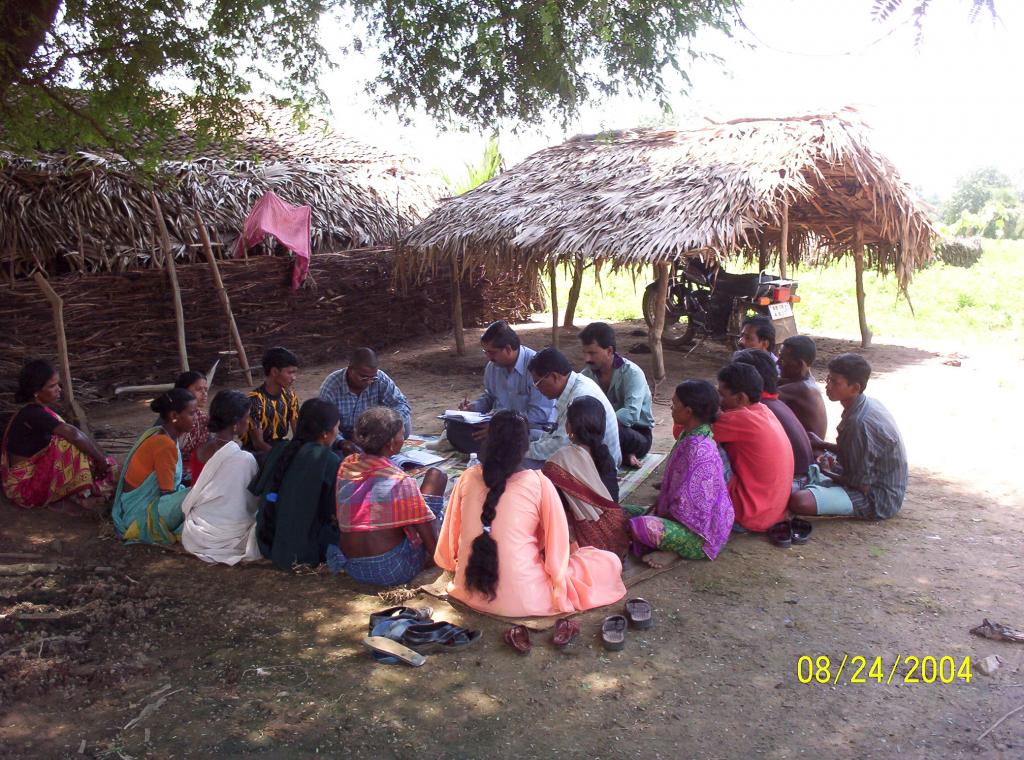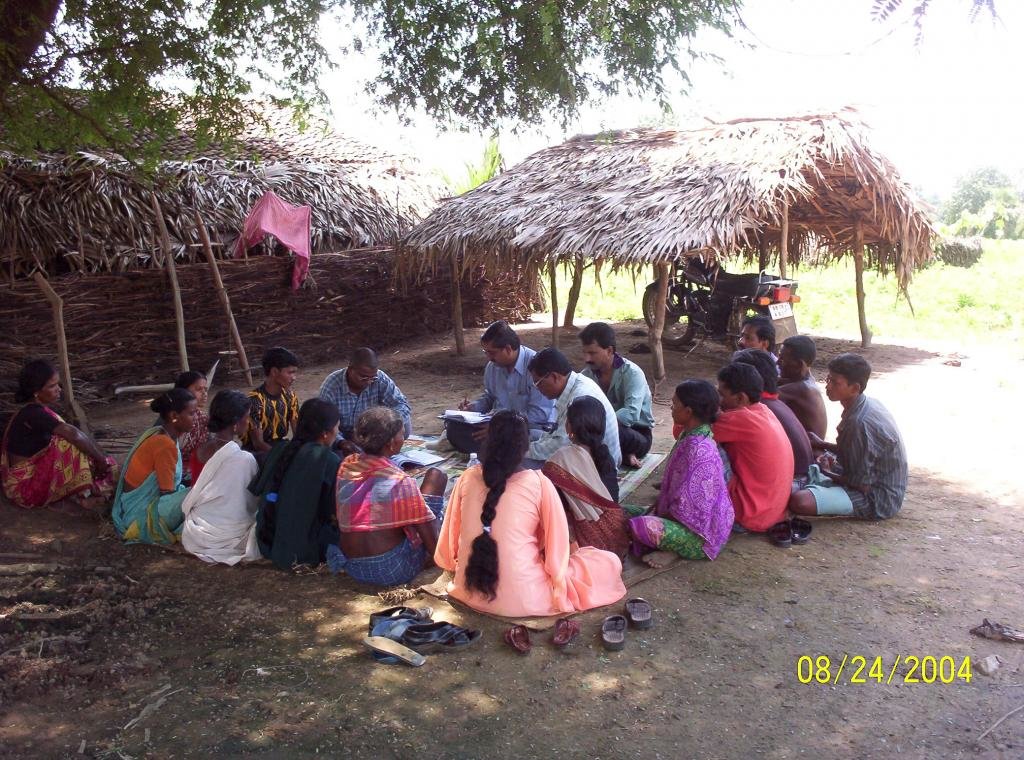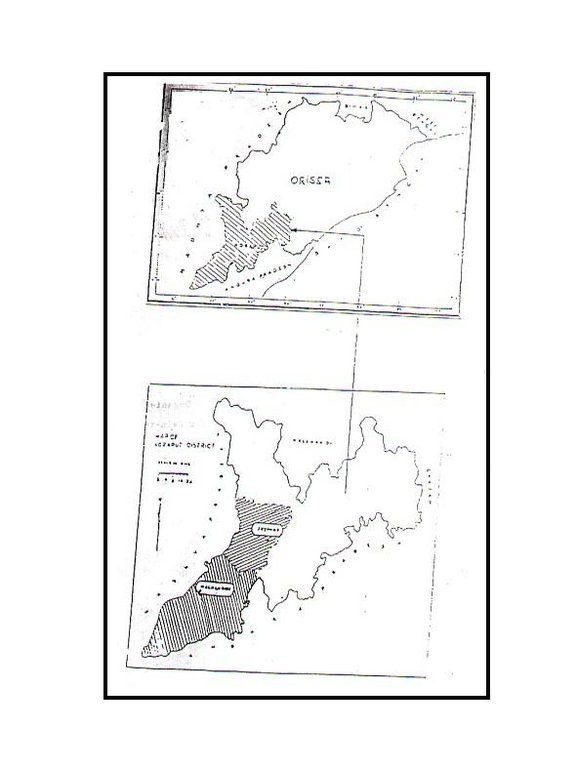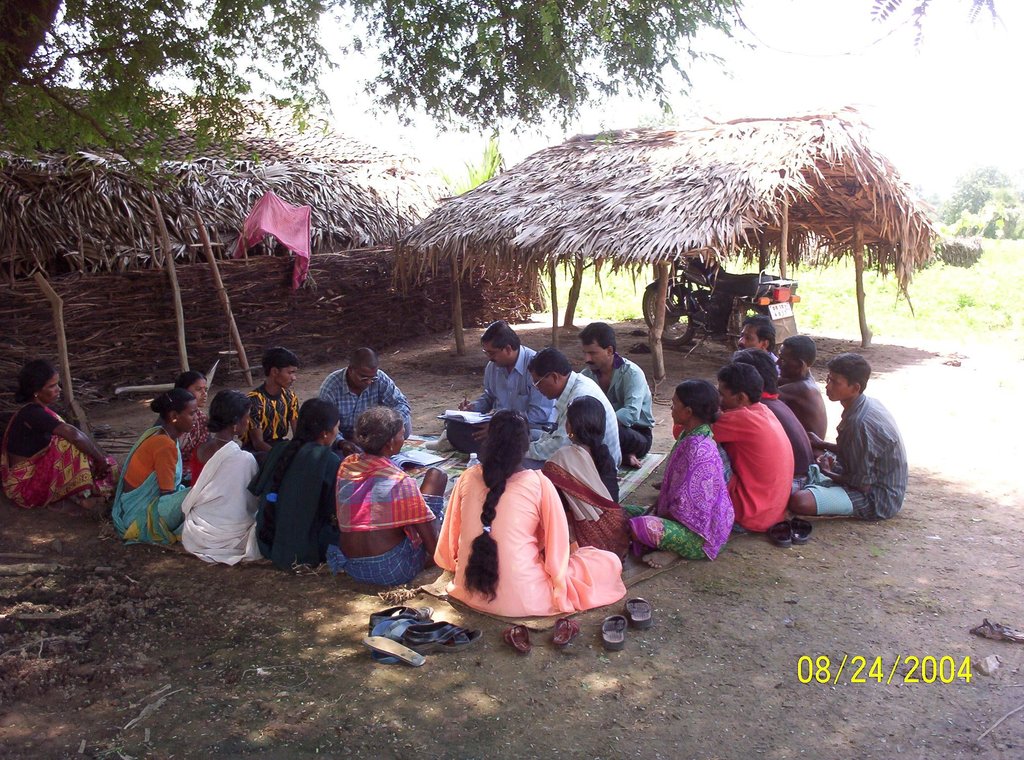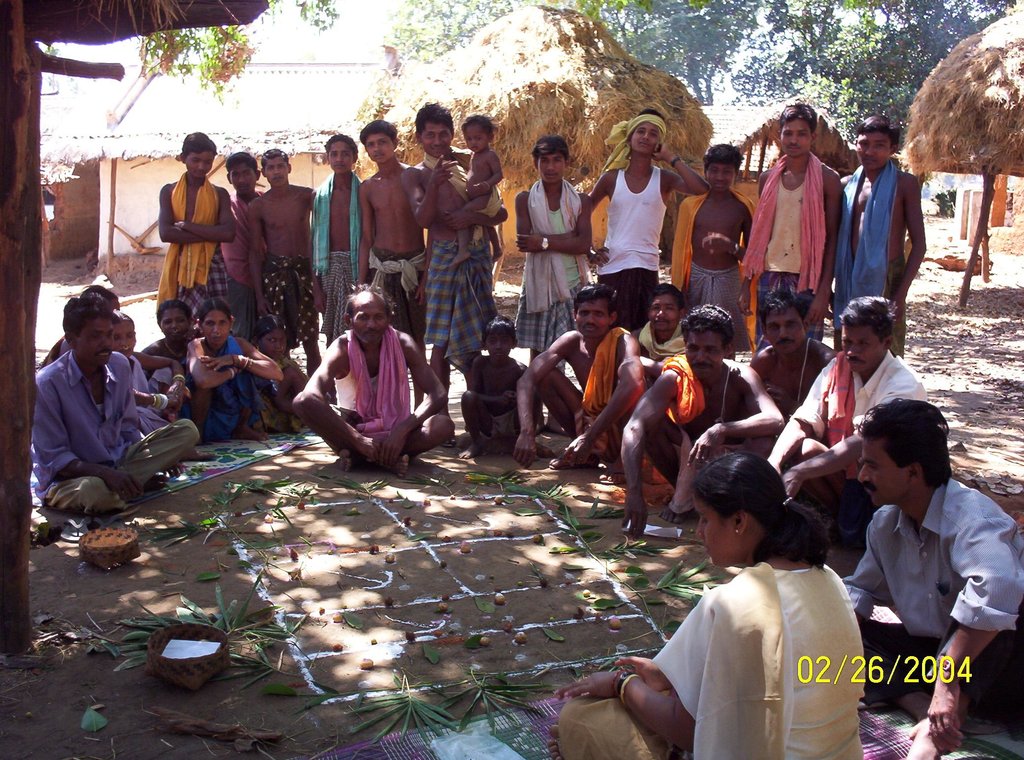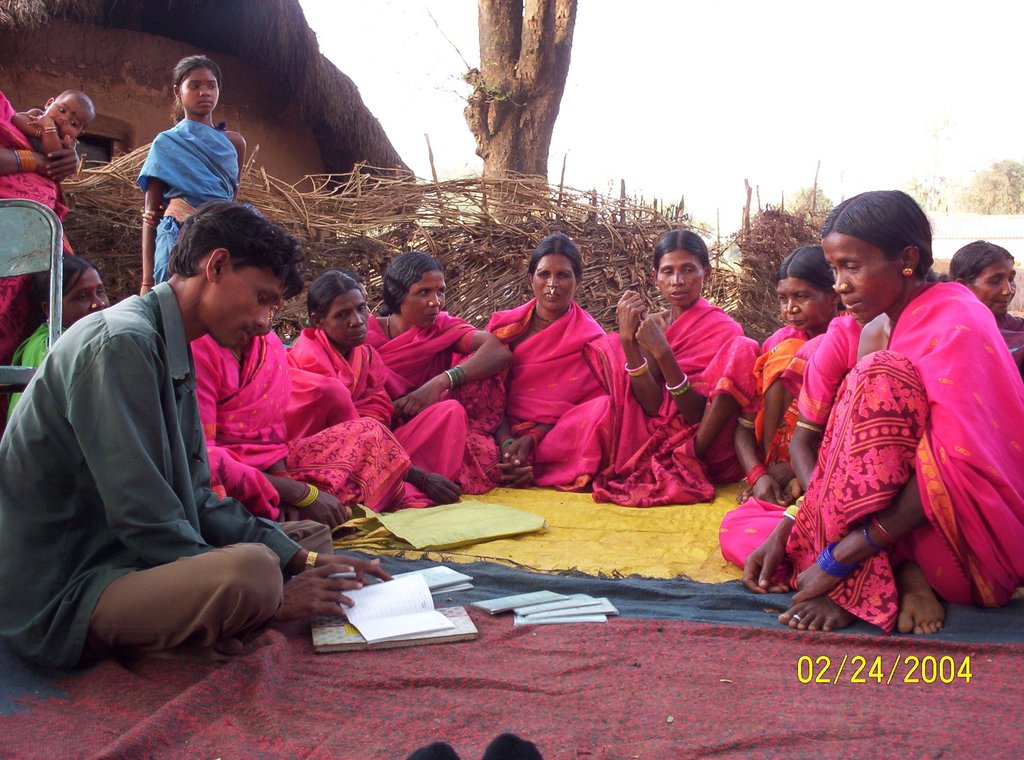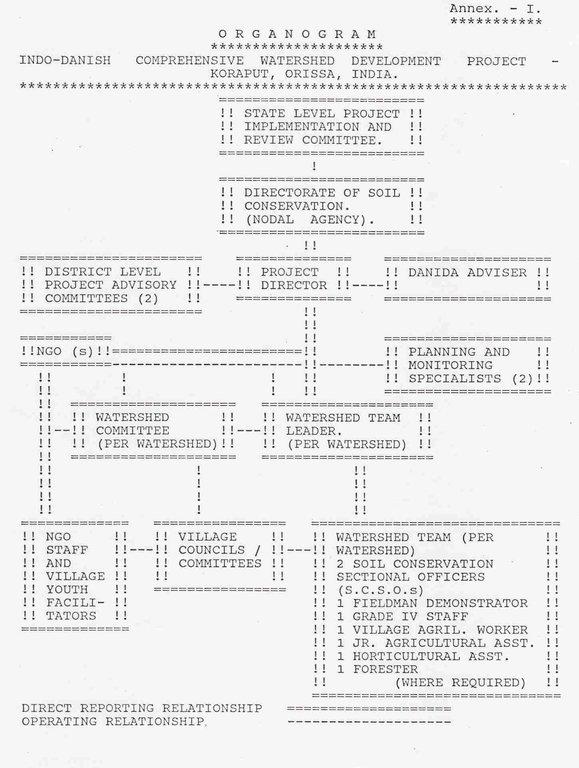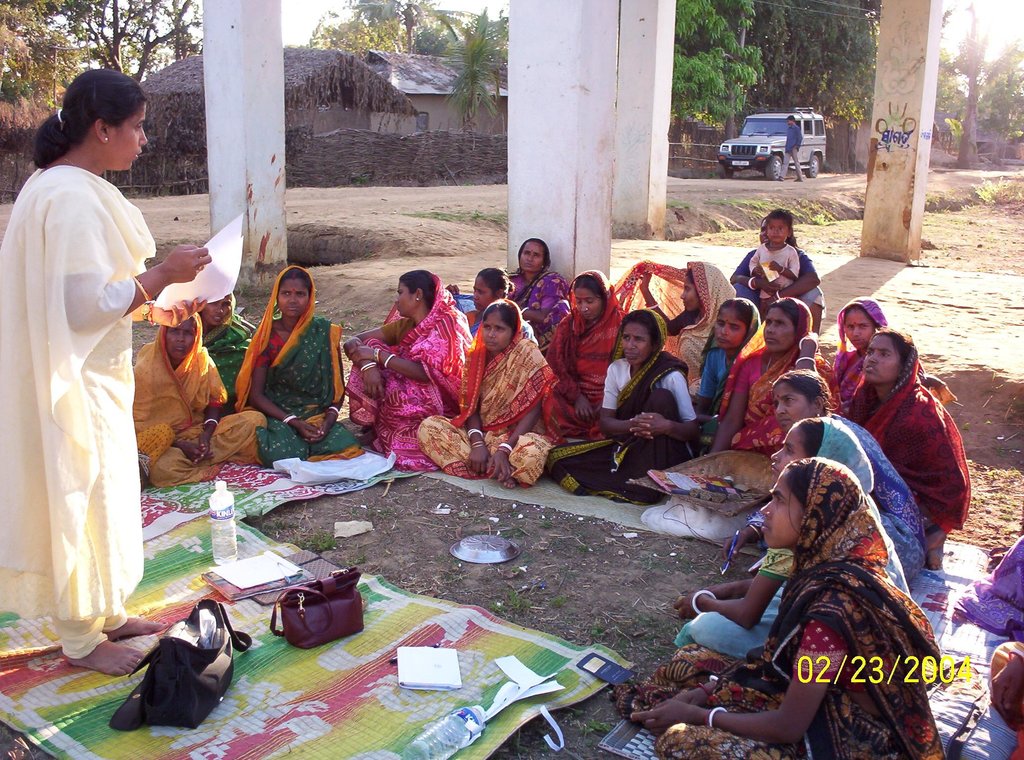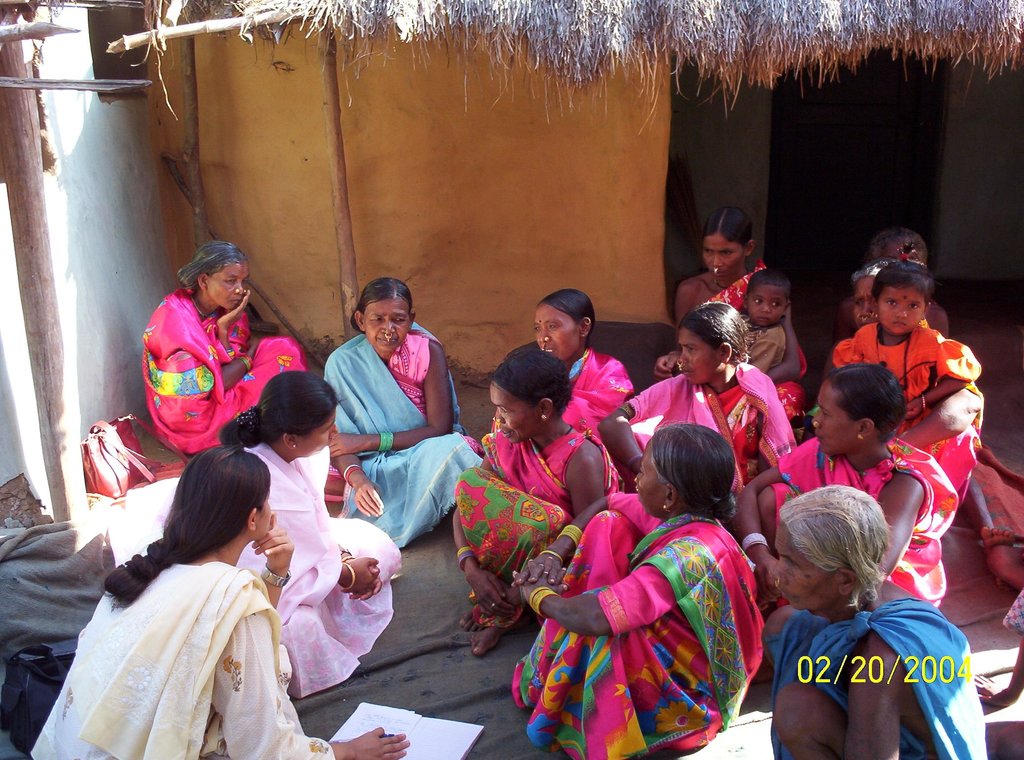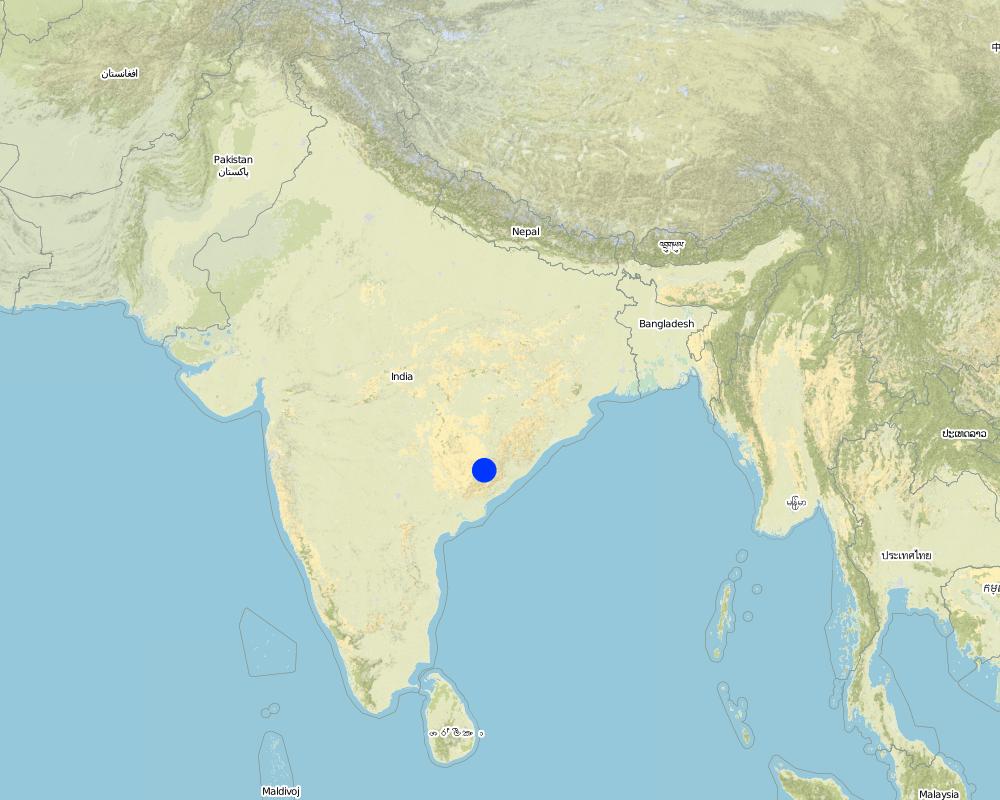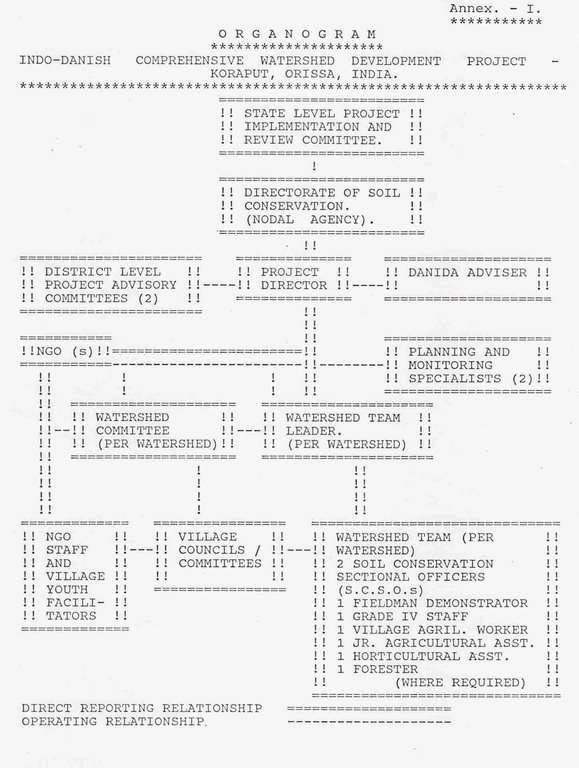PARTICIPATORY APPROACH IN IDCWDP, DANIDA [印度]
- 创建:
- 更新:
- 编制者: Srikanta Kumar Parida
- 编辑者: –
- 审查者: Fabian Ottiger
approaches_2372 - 印度
查看章节
全部展开 全部收起1. 一般信息
1.2 参与方法评估和文件编制的资源人员和机构的联系方式
SLM专业人员:
BIJAYALAXMI Mishra
印度
有助于对方法进行记录/评估的机构名称(如相关)
Orissa Government - 印度1.3 关于使用通过WOCAT记录的数据的条件
编制者和关键资源人员接受有关使用通过WOCAT记录数据的条件。:
是
1.4 SLM技术问卷的参考
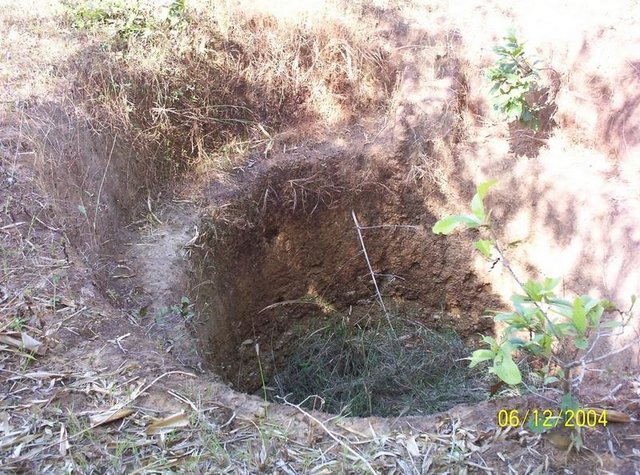
Integrated Farming System [印度]
Growing of crops for food, fodder trees and fibre forest in a compact patch.
- 编制者: Srikanta Kumar Parida
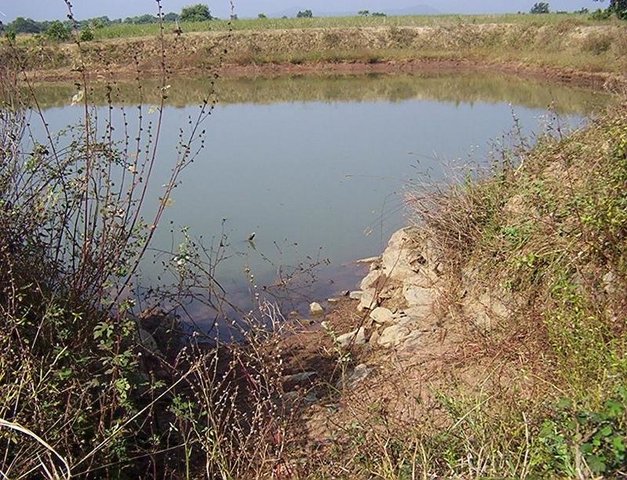
Dugout Sunken Pond with Catchment Treatment [印度]
Dugout sunken pond with catchment treatment.
- 编制者: Unknown User
2. SLM方法的描述
2.1 该方法的简要说明
Participatory approach for holistic and intigrated development of the defined area on watershed basis involving all level of stake holders.
2.2 该方法的详细说明
该方法的详细说明:
Aims / objectives: Long term - Establish suitable and locally acceptable land use system which are sustainable and ecologically sound.The land use system should enable the poor rural community to improve their living condition and tsupply of food, fuel and fodder and other essentials, without exposing the natural resources to harmful stress. Intermediate Objective- Preserve the resource base by introducing improvemnets which are feasible, effective and attractive to the target groups in the area by combining elements of soil conservation, crop production, horticulture, animal husbandary and tree planting in such a way that sustaibale use is made of every niche of land within the watershed.
Methods: (1) Mobilization of community by NGO/ GO people through meetings. (2) Demonstration at the field level. (3) Organizing farmers field day. (4) Exposure visit to the watershed area. (5) Training. (6) Land development activities,
Stages of implementation: (1) Socio economic survey. (2) Participatory Rural Apprisal (PRA). (3) Preparation of participatory annual action plan with the community and village and watershed committee. (4) Consolidation of annual action plan by project management unit and circulation for comments to WDCU, DSC(O). (5) Approval of annual action plan by the state level project empowered committee and sanction of funds. (6) Implementation through community and mobilisation for labour contribution by the community (if such component are there). (7) Training at the field level. (8) Organizing monitoring by the community/ Specialist.
Role of stakeholders: NGO (Field Organizers)- Organizing village meeting and mobilization of community towards different activities and labour contribution organising PRA, meeting, group discussion, survey, formation of committee, preparation of AAP. Villagers:- Attendance of meeting, selection of beneficiaries from the target group and sites for different activities. Monitoring and implementation (Physical) of the activity. Youth facilitator:- The village youth facilitators played a key role through out the process of planning, implementation and monitoring and to solve the problems in case arises at any stage of the work. The village yourth facilitator acted as the link person between the community and the project. SWC (From Project management Unit) - Supervision, training to the SWC specialist, communicate new technology to the community. Beneficiaries:- Implementation, contribution of labour selection of his own land for SWC technology, monitoring, receive training, training before/during/afteer care.
Other important information: Government and NGO collaborately played a vital role to bring all level of stak holders to a common forum of participation.
2.3 该方法的照片
2.5 采用该方法的国家/地区/地点
国家:
印度
区域/州/省:
Orissa
Map
×2.6 该方法的开始和终止日期
终止年份(若不再采用该方法):
2003
2.7 方法的类型
- 基于项目/方案
2.8 该方法的主要目的/目标
The Approach focused mainly on SLM with other activities (Live stock development, SHG formation, management group, development of local committee, income generating, identification of 10 poorest and support for upliftment, training, women empowerment)
Long term - Establish suitable and locally acceptable land use system which are sustainable and ecologically sound. The land use system should enable the poor rural community to improve their living condition and tsupply of food, fuel and fodder and other essentials, without exposing the natural resources to harmful stress. Intermediate Objective- Preserve the resource base by introducing improvemnets which are feasible, effective and attractive to the target groups in the area by combining elements of soil conservation, crop production, horticulture, animal husbandary and tree planting in such a way that sustaibale use is made of every niche of land within the watershed. -Ease the pressure on non arable lands by increasing the productivity of land which is suitable for more intensive use which is suitable for more intesive use without risk of loss in soil fertility. -Provide marginal farmers and landless people with assests which yield essentials or generate income possibilities. Immediate: Relevant authorities will identify, plan for implement and monitor proper conservation measures and land use system acceptable and in cooperation with the people in the project area of Koraput and Malkangiri districts. Thereby increase production of agricultural and other rural products and improve gainful, empowerment opportunity for men and women among landless , small and marginal farmers.
The SLM Approach addressed the following problems: (1) Both the project districts like Koraput & Malkangiri are among the most poor, backward with 90% of the house hold are below the official poverty line. Literacy rate is just above 10%. (2) The dry land farming is predeminant activity. (3) The soil in the districts suffer from severe land degradation and erosion problems needing protectin and preservation measures.
2.9 推动或妨碍实施本办法所适用的技术的条件
社会/文化/宗教规范和价值观
- 阻碍
(1) No faith on Govt. people. (2) Practice on not participapting in any Govt. programme. (3) No women participation in any common gathering. (4) Dominance of influencial persons in the villages. (5) No participation of poors in any developmental work.
Treatment through the SLM Approach: (1) Repeated meeting by Govt. and NGO staff (2) Greter importance to the poorer section through out the process. (3) Identification of 10 poorest family in each village (4) Engagement of Lady organizer to oroganize the women of the respective area. (5) Fo
财务资源和服务的可用性/可得性
- 阻碍
Irregular flow of fund by the sanction authority which hampered the season based activities.(2)Achieve the targetted amount of contribution for different activities from the community.
Treatment through the SLM Approach: The irregular funds flow continued till end of the programme.But regarding contribution component it was reduced from the 50% to20% in amount at the policy level which could be achieved by community mobilisation through NGO who were associated as the proj
法律框架(土地使用权、土地和水使用权)
- 阻碍
The existing land ownership, land use rights / water rights hindered a little the approach implementation Due to ignorance of the people, initially it was difficult to take up any activity in farmers land since the apprehensive of loss of llllland by the Govt. Staff was existing in the mind of land users.
3. 相关利益相关者的参与和角色
3.1 该方法涉及的利益相关者及其职责
- 当地土地使用者/当地社区
Land less and Small/marginal farmers
Work equally divided between men and women (Both men and women work on common land activities, the land users worked combinely and in most of the private activities work done individualy. Though the male and female do all type of work, but due to their usual practice the women participation was very less in the initial period of the project. But due to the presence of the NGO in the project, they could be brought in the main stream of the project and by which many successful women self help group than the male group could be organized. The project has earmarked poor as main target froup. Through NGO they have been encouraged and mobilized to partcipate in project activities. As per the project guide line no land less and the small/ marginal farmers have their representation in the village committee/watershed committee wheremajor decission taken place. During implementation they priority for engegement of labour and income.
- NGO
NGO as project partner
- 国家政府(规划者、决策者)
Ministry of Agriculture, India.
(1) Watershed development coordination unit (2) State Agriculture Department (3) Director of Soil Conservation
3.2 当地土地使用者/当地社区参与该方法的不同阶段
| 当地土地使用者/当地社区的参与 | 指定参与人员并描述活动 | |
|---|---|---|
| 启动/动机 | 外部支持 | public meetings; General village level meeting organized village committee members selected. Youth facilitator selected. Due to presence of NGO all villagers were mobilized to join in the mainstream of the project. |
| 计划 | 互动 | All community were associated in planning meeting and PRA . Addl land survey made in association with land users. Need assessment made for each house hold in association with the villagers. Approval of action plan in watershed and village committee. |
| 实施 | 外部支持 | |
| 监测/评估 | 互动 | At different level of meeting the land users views collected. The watershed committee (consisting of members from all villages) was the main body for monitoring and evaluation of the activities. |
| Research | 互动 | on-station; Only for limited activities some soil testing made in the soil research station of the district. |
3.3 流程图(如可用)
3.4 有关SLM技术选择的决策
具体说明谁有权决定选择要实施的技术:
- 主要是土地使用者,由SLM专家提供支持
解释:
Many technologies has been takn up from the guide line of NWDPRA. But some are also innovative one emerged from the project level. However whenever any technology decided to be implemented, the land users view aloways respected for sustainable of the activity and transferred appropriate technology.
Decisions on the method of implementing the SLM Technology were made by mainly by land users supported by SLM specialists. Relating to the method of implementation fo the activity, the suggestion of the land users played a vital role.
4. 技术支持、能力建设和知识管理
4.1 能力建设/培训
是否为土地使用者/其他利益相关者提供培训?:
是
明确受训人员:
- 土地使用者
- SWC specialists, extensionists/trainers, Local Invitor
培训形式:
- 在职
- 农民对农民
- 示范区域
- 公开会议
- 课程
培训形式:
- Courses and class room training
涵盖的主题:
Method of implementation, merits, demerits of the technology, maintenance, socio-economic dimension, exposure visit, management committee formation for sustainability of the technolotgy.
4.2 咨询服务
土地使用者有权使用咨询服务吗?:
是
指明是否提供了咨询服务:
- 在固定中心
说明/注释:
Name of method used for advisory service: Training and exposure visit, demonstration, meeting.; Key elements: Meeting and group discussion., Individual beneficiary interaction., Filed visit and watershed level exihibition.; 1) Advisory service was carried out through: projects own extension structure and agents; Extension staff: mainly government employees 3) Target groups for extension: land users; Activities: Demonstration, exposure visit, training, meeting, group discussion
Advisory service is inadequate to ensure the continuation of land conservation activities; In knowledge it is adequate, but the approach is plicy based. So the continuation can not be guaranted fully.
4.3 机构强化(组织发展)
是否通过这种方法建立或加强了机构?:
- 是,适度
具体说明机构的强化或建立程度:
- 本地
具体说明支持类型:
- 能力建设/培训
4.4 监测和评估
监测和评估是该方法的一部分吗?:
是
注释:
bio-physical aspects were regular monitored through observationse
technical aspects were regular monitored through measurements
socio-cultural aspects were regular monitored through observations
economic / production aspects were ad hoc monitored through observations
area treated aspects were regular monitored through measurements
no. of land users involved aspects were regular monitored through measurements
management of Approach aspects were regular monitored through measurements
There were several changes in the Approach as a result of monitoring and evaluation: (1) Many new activities introduced. (2) More funds diverted to the poverty oriented activities (3) Like income generating activities changes in last norm of NGO operational expenditure to give more priority on community participation. (4) 10 poorest identified were appreciated and suggested for concetration of their socio economic upliftment.
4.5 研究
研究是该方法的一部分吗?
是
5. 融资和外部物质支持
5.1 该方法中SLM组成部分的年度预算
如果不知道准确的年度预算,请给出一个范围:
- < 2,000
注释(例如主要的资助来源/主要捐助者):
Approach costs were met by the following donors: government (national - Salary and other expences of staff): 18.0%; international (DANIDA 13.25): 75.0%; local community / land user(s) (-): 7.0%
5.2 为土地使用者提供财政/物质支援
土地使用者是否获得实施该技术的财政/物质支持?:
是
5.3 对特定投入的补贴(包括劳动力)
- 设备
| 具体说明哪些投入得到了补贴 | 程度如何 | 对补贴做出具体说明 |
|---|---|---|
| 机械 | 充分融资 | |
| 工具 | 充分融资 | |
- 农业
| 具体说明哪些投入得到了补贴 | 程度如何 | 对补贴做出具体说明 |
|---|---|---|
| 种子 | 充分融资 | |
| 化肥 | 充分融资 | |
| Seedlings and biocides | ||
- 基建
| 具体说明哪些投入得到了补贴 | 程度如何 | 对补贴做出具体说明 |
|---|---|---|
| Community infrastructure | 充分融资 | |
如果土地使用者的劳动力是一项重要的投入,那么是不是:
- 以现金支付
注释:
Govt. wages for their labour work.
5.4 信用
是否根据SLM活动的方法给予信用值?:
否
6. 影响分析和结论性陈述
6.1 方法的影响
该方法是否帮助土地使用者实施和维护SLM技术?:
- 否
- 是,很少
- 是,中等
- 是,支持力度很大
The importance of low cost oriented appopriate technology of the project attracted to a greater part of the community. The land users have also trainined on implementation of technology like veg.bunding, water hole, V-ditch, excavation of ponds, structure, plantation, cave of natural forest etc.
该方法是否改善了阻碍SLM技术实施的土地使用权/用户权问题?:
- 否
- 是,很少
- 是,中等
- 是,支持力度很大
Due to close association of NGO and strong involvement of Govt. staff at the filed level the problem could be solved.
Did other land users / projects adopt the Approach?
- 否
- 是,很少
- 是,中等
- 是,支持力度很大
(1) The Govt. of India adopted GO-NGO collaboration in watershed development programme. (2) The district administration adopted like - (a) Low cost technology. (b) Community Participation. (c) Labour contribution in community (d) SHG (e) Exercise of PRA in watershed planning and monitoring.
6.3 方法活动的可持续性
土地使用者能否维持通过该方法实施的措施(无外部支持的情况下)?:
- 是
若是,请说明如何维持:
The land users can continue the approach due to following reasons. - Low cost. - Skill transferred to the community - Management committee has been frame. - The farmers have realised the benefit in their own land and demonstration plot. - Registered VDA has established in all the villages for management and financial support to poor land users.
6.4 该方法的长处/优点
| 土地使用者眼中的长处/优势/机会 |
|---|
| Community level institutions like VDA, SHGs has been formed. |
| Technology with the skill of implementation has been transferred . Technology with the skill of implementation has been transferred to the community. |
| Two well trained village ficilitators are existing in all the villages who are well on all aspects of the projecttrained. |
| 编制者或其他关键资源人员认为的长处/优势/机会 |
|---|
| NGO cooperation (How to sustain/ enhance this strength: The Govt. should take it as a policy.) |
| Registered VDA existed in all the village (How to sustain/ enhance this strength: They should be honour/ recognse and get priority at all official lelvel) |
| SHG (How to sustain/ enhance this strength: All SHG must be tagged with banks and after institutions which has done by the project to a great extent.) |
| Village Facilitator (How to sustain/ enhance this strength: District administration may utilise their services.) |
7. 参考和链接
7.1 方法/信息来源
- 实地考察、实地调查
- 与土地使用者的访谈
7.2 参考可用出版物
标题、作者、年份、ISBN:
Plan of Operation (First, Second)
可以从哪里获得?成本如何?
Director, Soil Conservation, Orissa
标题、作者、年份、ISBN:
Guide line for NWDPRA
可以从哪里获得?成本如何?
Agriculture Depaprtment, Govt. of India
链接和模块
全部展开 全部收起链接

Integrated Farming System [印度]
Growing of crops for food, fodder trees and fibre forest in a compact patch.
- 编制者: Srikanta Kumar Parida

Dugout Sunken Pond with Catchment Treatment [印度]
Dugout sunken pond with catchment treatment.
- 编制者: Unknown User
模块
无模块


